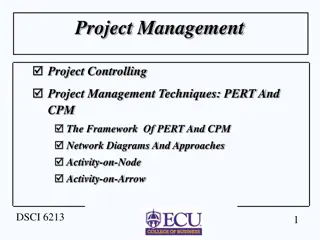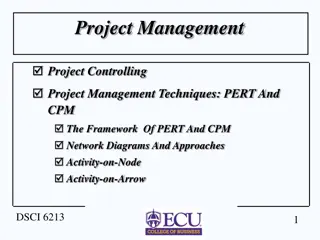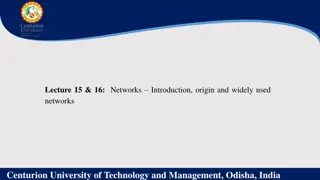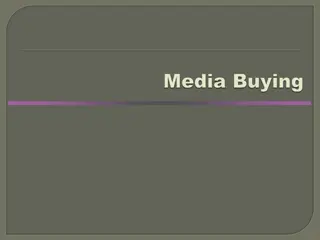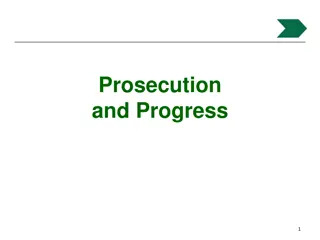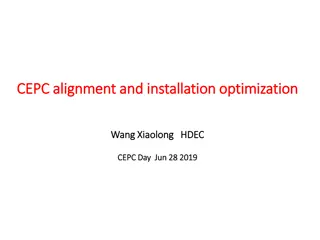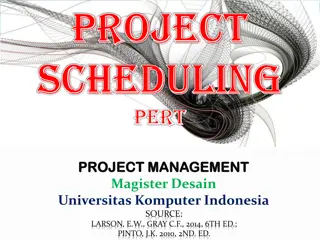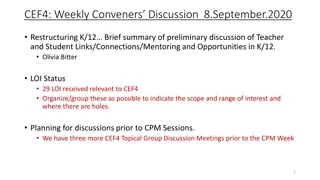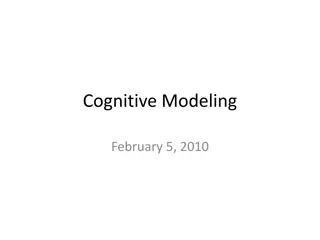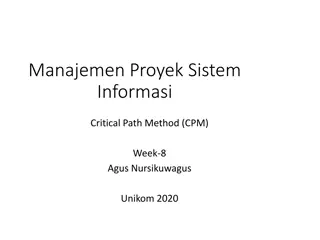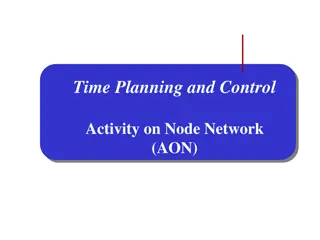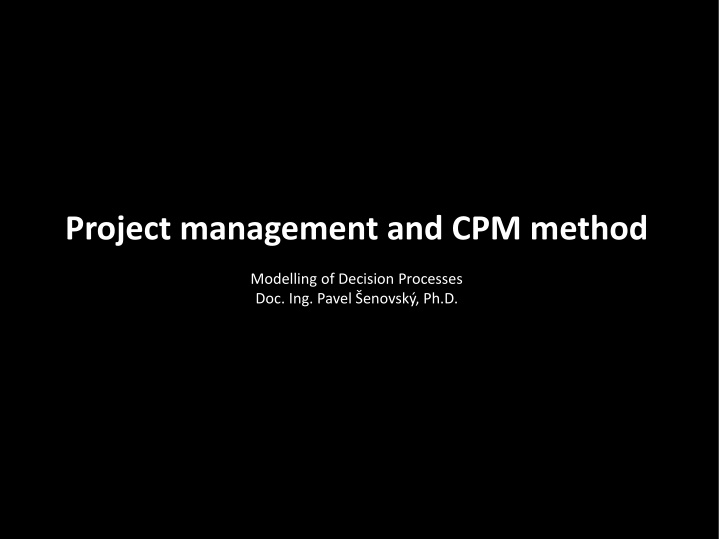
Project Management and CPM Method in Decision Processes
Explore the concept of Critical Path Method (CPM) in project management, focusing on project sequence, limited resources, activities, predecessors, followers, and project network development. Learn about the inputs, modern approaches, and how activities are interconnected to streamline project completion efficiently.
Download Presentation

Please find below an Image/Link to download the presentation.
The content on the website is provided AS IS for your information and personal use only. It may not be sold, licensed, or shared on other websites without obtaining consent from the author. If you encounter any issues during the download, it is possible that the publisher has removed the file from their server.
You are allowed to download the files provided on this website for personal or commercial use, subject to the condition that they are used lawfully. All files are the property of their respective owners.
The content on the website is provided AS IS for your information and personal use only. It may not be sold, licensed, or shared on other websites without obtaining consent from the author.
E N D
Presentation Transcript
Project management and CPM method Modelling of Decision Processes Doc. Ing. Pavel enovsk , Ph.D.
Project Sequence of activities Beginning and end defined Limited resources financial human other (material, required machinery, ...) Management of the project the effort to control the project so it can be finished in time with the planed resources
Critical path method (CPM) Critical path method (CPM) CPM = Critical Path Method Developed by Morgan R. Walker and James E. Kelly, jr. in fifties of 20th century CPM as a term used up to date, the original way to calculate it does not CPM in modern sense is used to analyze project networks
Inputs Original CPM List of activities Time definition of the activities (how long it takes to finish them) Links between the activities Modern approach Based on original CPM and List of resources Resources characteristics Usage of resources by activities Quantification of the resource needs by activities
Activities predecessors and followers Predecessors activities which must be finished just before the inspected activity can start Followers activities which must start after the inspected activity is finished Both approaches describe links between the project activities Both approaches are commutable (lead to same results same project structure) If using software it is possible to translate between them automatically
Activities predecessors vs followers activity followers Prede- cessors length [days] A excavation of foundations B - 2 B concreting the foundations C A 10 C gross building D B 17 D Roof E,F,G,H C 5 E Electro installation I D 5 F Pipelines (water, gas) I D 5 G Heating I D 5 H Windows I D 14 I Plaster, floors J E,F,G,H 21 J Final inspection - I 1
Network Activities in diagram are links (not nodes!) Networks is relatively compact it shows linkage between activities (and possibly its basic properties) Whole project is on relatively small space Clear identification of the critical path Using software Start and end date of the activity Length (of activity)
Software support - - - - - Project Libre open source project management software Made in Java (able to run almost anywhere) 1.7.0 version available on my homepage (http://homel.vsb.cz/~sen76/) Basic functionality comparable to MS Project MS Project de facto standard in the field of project management
Critical path Start to finish path in the project There is always critical path Properties of critical path Longest path in diagram between start and finish of the project Increasing length of any activity on such path automatically leads to increasing time of the whole project Management of critical activities is premise to effective management of the project
Network diagram - disadvantages The length (time perspective) of the activities and project is not easily identifiable Does not support easy manipulation with activities (does not support work of manager) The need to have different perspective on activities which would not have these disadvantages HARMONOGRAM GANT s DIAGRAM
Harmonogram Again diagram Not a network graph Activities list Y-scale X-scale is dedicated to time Preserves linkage between the activities (the links are visible in graph) Also capable to visualize the critical path
Critical activities II What is the difference between the critical and non-critical activity? Time (other resource) reserve There are no reserves on critical path! We have reserves in non-critical activites, manager can free these reserves and use them to support critical activities which are running out of control What can we do? It is possible to move in time non-critical activity or spread it in time The goal is to free resources connected to the non-critical activity
Other features of Gants diagram Manipulation with activities using mouse (drag and drop support) Moving the activity Changing the length of it Monitoring compliance with plan Possible to sign % of finishing of the activity Continuous control over the project (where are we completion wise) Early identification of problem so we can still effectively solve it
SW support Available lot of commercial and open source tools for project management support MS Project is considered as standard for it Desktop version (available in faculty s computer laboratory) Server version available Project Libre - http://www.projectlibre.org/ Open source Multiplatform Reasonably compatible

